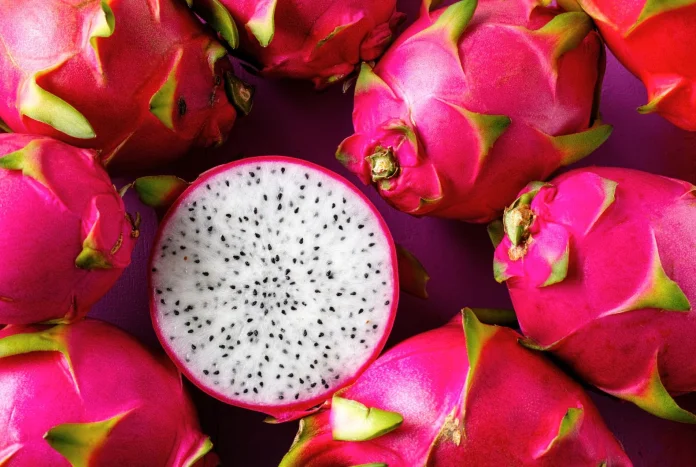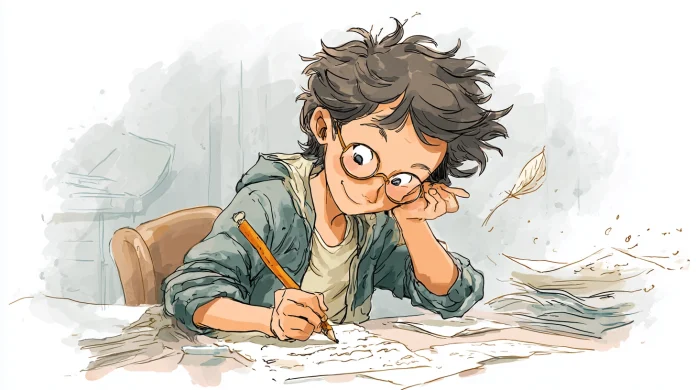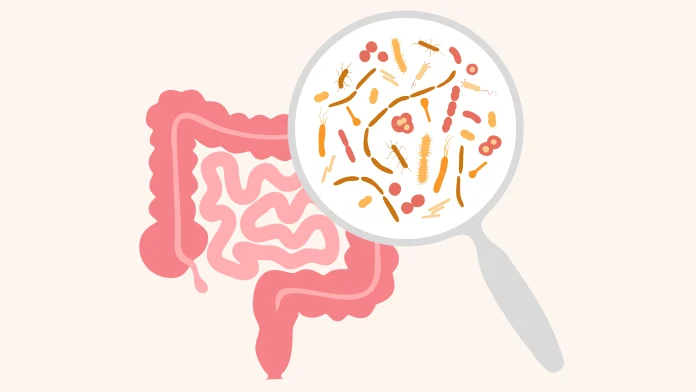Interview by Sofia Campos Caminos
Nestled in the heart of Northern Maine, surrounded by serene forests, lakes, and the grandeur of Mt. Katahdin, Sewall House Yoga Retreat is a sanctuary like no other.
The team behind Simple People recently curated a list of the top yoga retreats in the U.S. based on user reviews across multiple websites, and Sewall House Yoga claimed the number one spot!
The historic house, which serves as the retreat venue, dates back to 1865. It was once the home of Donna Davidge’s great-grandfather, who introduced Theodore Roosevelt to the healing power of nature. Today, Sewall House remains a sanctuary where individuals can heal, reconnect, and find inner peace through yoga, meditation, and nature.
Leading the retreat is Donna Davidge, a 70-year-old 500 E-RYT yoga instructor and nutritionist. Her yoga journey began in 1972, when she took her first class and quickly realized it was her life’s calling. For decades, Donna has helped others experience the life-changing benefits of yoga. Since 1997, she’s transformed her family’s legacy into a retreat focused on healing.
Donna divides her time between Island Falls, Maine, where she runs Sewall House, and Manhattan, where she teaches at Pure Yoga. This lifestyle enriches her approach to yoga and wellness.
In this interview, Donna shares her vision for Sewall House, the power of vulnerability, and the profound impact of yoga. Her mission is to guide people to find health, happiness, and connection through the healing power of yoga and nature—in one of the most beautiful places on Earth.
SIMPLE PEOPLE: You’ve mentioned that life leaves a mark on both the body and soul. Can you explain what you mean by that and how it connects to your mission at Sewall House Yoga Retreat?
DONNA: Frankly, life isn’t easy. Even before we had COVID, right? Now we have the digital thing. I started my retreat in ’97. My first yoga class was in 1972. I was a freshman in college. I was a yoga instructor and still am in the winter months in New York City. And so there were no email lists or influencers or anything like that. You just had your people who came to your classes, and you did it because you loved it, and you saw them transformed, changed, and healed. (…) If we want to be happy, it’s a choice. But if we are stagnant and don’t examine our life physically, mentally, emotionally, and spiritually, we’re not going to move forward.
SP: How have things changed since 1997? What do you think people are experiencing now? Are there any new challenges or common issues in society that you’ve noticed?
D: When I started my retreat in ’97, I did not know what email was, and a few years later, someone approached me about a website in ’99. That can show you how fast and far technology has come in just a couple of decades. And so, being in New York in the winter months, I notice, particularly young people, but anybody walking down the street with earbuds. If I’m walking my dog and I come around the corner, they’re not aware of what’s going on. Their energy is like, “Lady, you’re in my way, and you really irritate me.” And when I’m in Maine for the rest of the year, running my retreat, that doesn’t happen. It’s a very small town. People are not on their phones. They are not on earbuds. People wave in the car. They ask about the weather at the post office. They help each other when they see someone needs help doing something. Two totally different worlds. (…) I just see how people are very disconnected, and I find it really sad. People are in their own worlds, which feels hostile to me.

SP: How is Sewall House Yoga Retreat different from other retreats? Would you say it’s about your experience and the location?
D: I think it is. Maine is a very desirable part of the United States to travel to. Yet, I will say there are more yoga retreats popping up in Maine that are easier to get to because we’re up near the Canadian border.
I feel like when people get to us, this is a different world. We’re not on the coast, which is really touristy, and you feel like you’re just taking people from the city into another very crowded place because it is touristy. So when they get here, they really get the connection to nature. Then we go on the lake, and they’re like, “Where are all the people on this beautiful lake?” You have to come this far, but you’re not leaving the country. And so, I’ve always thought that our location is pretty special. There is really a lot of nature there.
And once they get there, they realize we are different from other retreats. We came on board before the others. And my staff—a few of us are older, like in their 60s, and I just turned 70 a few weeks ago—, even our younger people in their 40s have really done years of practice.
Also, we’re not new on the scene. I’ve been teaching this for 40 years, practicing it for 50 years. I’m now 70.
SP: How does nature’s power influence the healing process, and what makes it such a transformative force in recovery?
D: On my retreat, what also makes it unique—and this isn’t of interest to everyone, but it’s why I did it—is that I bought it. I didn’t inherit it. It’s an ancestral home. My great-grandfather was trained by the Native Americans about nature from the age of three. It’s a true story. And Theodore Roosevelt, when he was in college, was very sickly all throughout his childhood with asthma. He went up there three times in a row, trekked with my great-grandfather, went up mountains, and, long story short, they had a lifelong friendship. Healing happened in this house. This man healed from asthma. (…) He was going to be a naturalist. So, what drew him there was a professor who said, “You’ve got to meet this man who knows so much about nature.” My retreat and our community there is really rooted in a history of how nature connects us to each other and to healing, because that’s exactly what happened. These two unlikely men became lifelong friends as a result of their mutual love of going out into nature. And I’m very much into that. Plus yoga. We’re made of nature, right? We’ve got the earth element, the water, the fire, the air, and the space. We’re all of those things. So, it’s in us. And, again, you don’t have to get too philosophical, but I tend to.
SP: What other activities do you offer in addition to the yoga classes?
D: We go out pretty much whenever anybody wants to. So, we get up in the morning, do a half-hour meditation, yoga, and then breakfast. After that, it’s like, “What’s the weather like? Who wants to go to the waterfall? Who wants to ride a bike? Who wants to go for a walk in the woods”. Because we have woods you can walk in town, but we also have these amazing state parks and national monuments nearby that are really like wilderness. They’re wonderful. So, every day is a new day at Sewall House. We have a set schedule for meals and yoga, but aside from that, it’s very personalized. We only have six bedrooms, so we don’t put people in bunks with strangers they don’t know. It’s very boutique. We get up in the morning and ask, “What do you feel like doing?”. Often, people will do things together and end up forming a group. But sometimes, they’ll do things separately, just kind of organically.


SP: Your slogan is “simplicity in a complex world”. Can you tell me more about it?
D: I came up with that in 1997 and I think about how much more complicated and complex it has become since then. I came up with that originally because I was thinking about it being an ancestral home, right? It was built in 1865. They didn’t have all the amenities we have today, especially when the house was first built. They didn’t have heat, and they didn’t have plumbing. That’s where I was thinking “simplicity in a complex world”, because when you come to the retreat, a lot of times it’s to simplify your life. You have the opportunity, for example, for a digital detox. On rare occasions, someone will come into our retreat and say, “I’m handing you my phone. I am not going on my phone.” Honestly, though, we have Wi-Fi, and some people can’t come on the retreat unless they can do a little bit of work from there. So, we’re not strict about that, but we give them the option to step away as much as they can.
SP: How is simplicity related to healing? How is it related to having a happier life?
D: I think what makes our life simple is a heartfelt connection with others. I just think that a lot of times, the things we worry about, whether it’s finances, health, or relationships, can really eat us up when we need to. Again, this is going to sound kind of cliché, but our lives are usually so full of so much. And that’s where gratitude comes in. When you wake up in the morning and you have your breath, your eyes, your nose, your mouth, your ears, your skin, you have a lot. You can walk—seriously, the stuff we take for granted, right? But then we get caught up in all the things, the “what-ifs,” and, of course, I think a lot of that. Again, yoga helps because you’re working on your mind, right?
I’m a high-energy person, and sometimes I do things too impulsively or I’m worried about something. We can all worry, we can all be fearful, we can all make poor choices. In the end, though, you sit back and realize that to be happy, it’s your choice. What motivates you in life, I think, is really what makes you happy.
SP: What are the most important tools to get through life’s difficulties?
D: I don’t have the answer, but I think that’s one of the reasons I found yoga and meditation to be a very good way to seek some of the answers. The other thing I want to say, and I don’t mean this flippantly or arrogantly, but in our society in the United States 70% of our culture is on either anti-anxiety or anti-depressant drugs, which means they can’t handle their day-to-day lives on some level. And I get it if someone has a trauma, like being blindsided by the loss of someone, an illness, or whatever it might be. But just saying, “I can’t handle the day-to-day,” I think it’s too bad that people don’t realize that happiness isn’t always joyful. There are going to be times when you feel very discouraged, very sad, or angry. That’s just part of being human. And if we could just acknowledge that…
I guess maybe by now I’ve self-published a memoir, and I’ve lived a kind of unique life. I’ve taken certain risks, and they haven’t all worked out very well. But in taking those risks, I’ve seen how you can lose things and gain things. Putting yourself out there is one of the ways to learn to have tools to not self-destruct. Does that sound weird? If there’s joy, if there’s tears, if there’s anger—whatever. I just don’t think we allow ourselves to be vulnerable enough. And I think, ironically, that’s how we get stronger. The whole thing in life is “Keep it together,” which means you aren’t being vulnerable. You can’t be vulnerable with everyone, but you have to have a space with yourself to be honest—and with someone.
SP: Being vulnerable makes you stronger.
D: You’re sensitive and I think I’m sensitive too. I think really the choice for us to be authentically ourselves, if you’re a sensitive person, is to allow yourself to be vulnerable. Otherwise you’re not living your authentic truth. But I don’t know that that’s a full life, an “examined life” they call it. And everyone has to choose. Some people are just so afraid of getting hurt that they just won’t be vulnerable and they won’t take chances. And, that’s their choice. I don’t think we can say what’s right or wrong. But we have this one life that we know of, though yogis believe in reincarnation. So, let’s make the most of it and grow from it. And if there is reincarnation and you grow from it, then maybe you don’t have to come back and make the same darn mistakes over and over again.
SP: You mentioned before that “happiness is not always joyful”. Can you tell me more about this concept?
D: Oftentimes they say that the happiest people on the outside are actually not that happy inside. So, I think the goal with yoga, meditation, or self-reflection—or whatever it is—is to go inside and see that, yes, there are times I’m not joyful, times I’m not happy, times I’m angry, times I’m sad. How can I filter through that? You have to go through it. Ultimately, I consider myself probably a happier person than a lot of people, but all those other emotions I just mentioned to you, I definitely have. I think that’s part of being a sensitive person. (…) So, to be truly happy, I think, is to live in the whole spectrum of being alive.
And then you have the moments of bliss and joy, which is kind of the ultimate goal of yoga. But I don’t act like I’m always in bliss and joy. (…) I think when I go out into the world, my job is to inspire other people. (…) So, when we look at someone, and we think they’re really happy, believe me, it doesn’t come inherently, right? They choose that, and believe me, they have difficulties too.
SP: What are you looking forward to with your retreat? Are you looking forward to any changes or future plans?
D: I want people to feel that they can come whenever they want and really have a retreat, and not have to take a workshop. Workshops are a great immersion and they’re a great transformation, but my original vision for this was just for people to come whenever they wanted. I really want them to feel like we care about what works for them.
And then the other thing about my retreat, in all honesty, is that retreats are like coffee shops now. They’re everywhere. So I would just hope that people still find Sewall House for what it’s beautiful about, what it’s strong about, and what it’s unique about. With all this onrush of the commercialization of healing and wellness, I hope we would still keep a place in the market.
That’s really important to me because we don’t know how things change, but right now, through research, you can see we’ve been really acknowledged over the years, and I am super grateful for that.
SP: Right now you’re the top one. So I think that that’s going to continue. Don’t worry about it.





